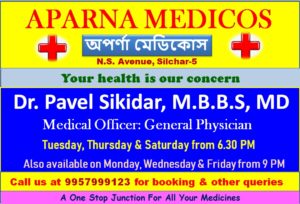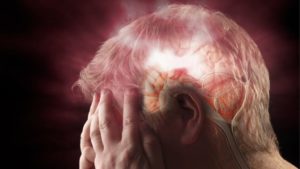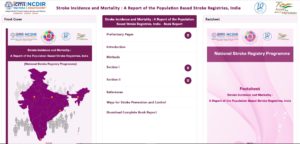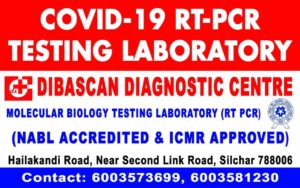HappeningsAnalyticsBreaking News
High stroke burden in India driven by tobacco use, hypertension and diabetes!
Findings of first comprehensive report of the Population Based Stroke Registries by ICMR-NCDIR, Bengaluru

Dec. 8: The “Stroke Incidence and Mortality: A Report of the Population based Stroke Registries, India” prepared by the Indian Council of Medical Research (ICMR) – National Centre for Disease Informatics & Research (NCDIR), Bengaluru provides the status of stroke burden in different regions of India from data collected from 2018 -2019 as part of the Population based Stroke Registry(PBSR) of the National Stroke Registry Programme.

Every year, 187 people per lakh population had first-ever stroke in Cuttack, Odisha, while in Cachar district of Assam, it was 96 stroke cases per lakh population. Deaths due to stroke within 28 days of onset of stroke ranged from 15 per lakh population in Kota, Rajasthan to 46 deaths per lakh populationin Varanasi.
 Among the stroke cases reported, two-thirds were in males, and majority (89 %)occurred in age group of 45 years and above. Stroke due to lack of blood supply (ischemic stroke) to the brain was the most common type reported in both urban (range 60 to 84%) and rural (range 44 to 85 %) areas. Stroke due to bleeding inside the brain (haemorrhagic stroke) was high in Varanasi (35%) and Cachar (27%). Hypertension, Diabetes and tobacco use were common risk factors reported across all registries.
Among the stroke cases reported, two-thirds were in males, and majority (89 %)occurred in age group of 45 years and above. Stroke due to lack of blood supply (ischemic stroke) to the brain was the most common type reported in both urban (range 60 to 84%) and rural (range 44 to 85 %) areas. Stroke due to bleeding inside the brain (haemorrhagic stroke) was high in Varanasi (35%) and Cachar (27%). Hypertension, Diabetes and tobacco use were common risk factors reported across all registries.
 Prof Satish Chandra, former Director NIMHANS, Bengaluru highlighted that, “Stroke is a medical emergency and early awareness of symptoms of stroke, and reaching a hospital for prompt diagnosis and treatment is crucial for recovery and reduction of disability”. Dr Prashant Mathur, Director, ICMR-NCDIR said, “It’s crucial to have reliable, ongoing systematically collected data on stroke, it’s risk factors and outcome as part of setting up stroke surveillance in the country which will inform policy and programmatic actions”.
Prof Satish Chandra, former Director NIMHANS, Bengaluru highlighted that, “Stroke is a medical emergency and early awareness of symptoms of stroke, and reaching a hospital for prompt diagnosis and treatment is crucial for recovery and reduction of disability”. Dr Prashant Mathur, Director, ICMR-NCDIR said, “It’s crucial to have reliable, ongoing systematically collected data on stroke, it’s risk factors and outcome as part of setting up stroke surveillance in the country which will inform policy and programmatic actions”.
 ICMR-NCDIR set up Population based Stroke registry to address the nationwide gap in data on first every stroke occurrence in adults (incidence) in India. PBSR was established in 5 different regions (Varanasi in the North, Kota in the West, Cuttack in the East, Tirunelveli in the South and Cachar in North East India). Data was collected from all health facilities and diagnostic centres that diagnose and treat stroke cases occurring in a defined geographical area.
ICMR-NCDIR set up Population based Stroke registry to address the nationwide gap in data on first every stroke occurrence in adults (incidence) in India. PBSR was established in 5 different regions (Varanasi in the North, Kota in the West, Cuttack in the East, Tirunelveli in the South and Cachar in North East India). Data was collected from all health facilities and diagnostic centres that diagnose and treat stroke cases occurring in a defined geographical area.
The complete report can be accessed athttps://ncdirindia.org/All Reports/pbsrbook/default.aspx
 (The ICMR- National Centre for Disease Informatics and Research, Bengaluru is one of the institutes under the apex medical research body -ICMR. It aims to provide baseline information and support for designing, monitoring and conducting disease control programmes and activities. ICMR-NCDIR focuses on specific non-communicable diseases like cancer, diabetes, CVDs and stroke. ICMR-NCDIR also designs, undertakes and implements multi-registry/ centric collaborative etiological research studies in keeping with recent advances in epidemiological research and facilitates programmes on NCD care in India. Visit www.ncdirindia.org)
(The ICMR- National Centre for Disease Informatics and Research, Bengaluru is one of the institutes under the apex medical research body -ICMR. It aims to provide baseline information and support for designing, monitoring and conducting disease control programmes and activities. ICMR-NCDIR focuses on specific non-communicable diseases like cancer, diabetes, CVDs and stroke. ICMR-NCDIR also designs, undertakes and implements multi-registry/ centric collaborative etiological research studies in keeping with recent advances in epidemiological research and facilitates programmes on NCD care in India. Visit www.ncdirindia.org)
For more information, one can contact Office of Population Based Stroke Registry, Department of Medicine, Silchar Medical College and Hospital (SMCH)





